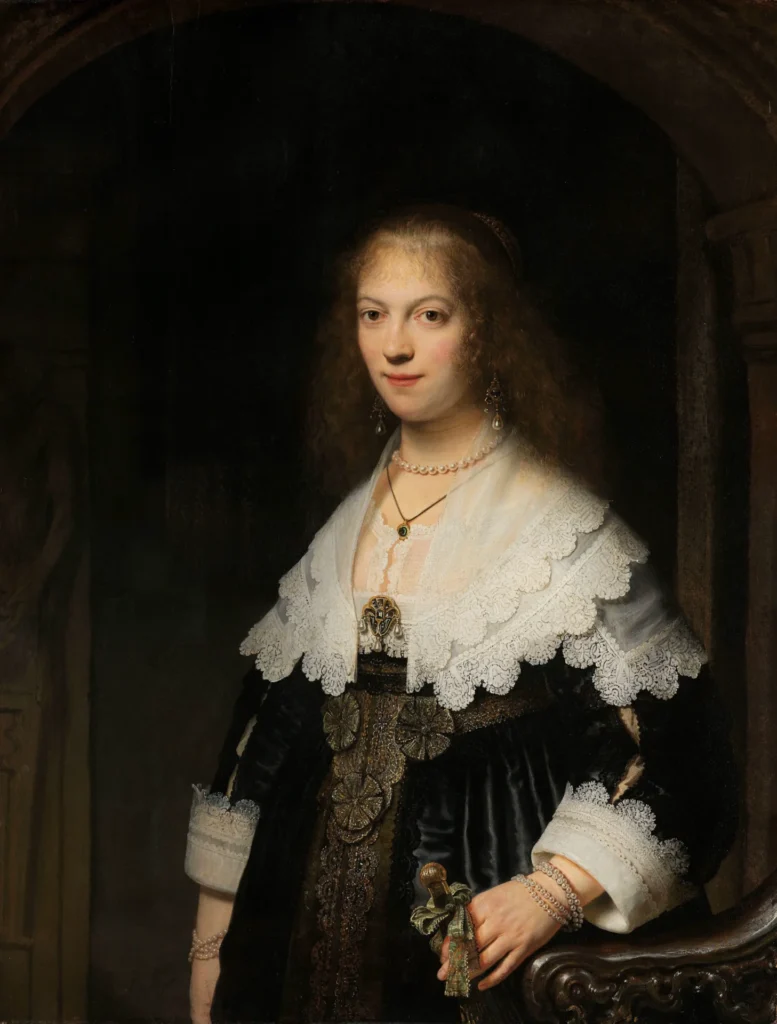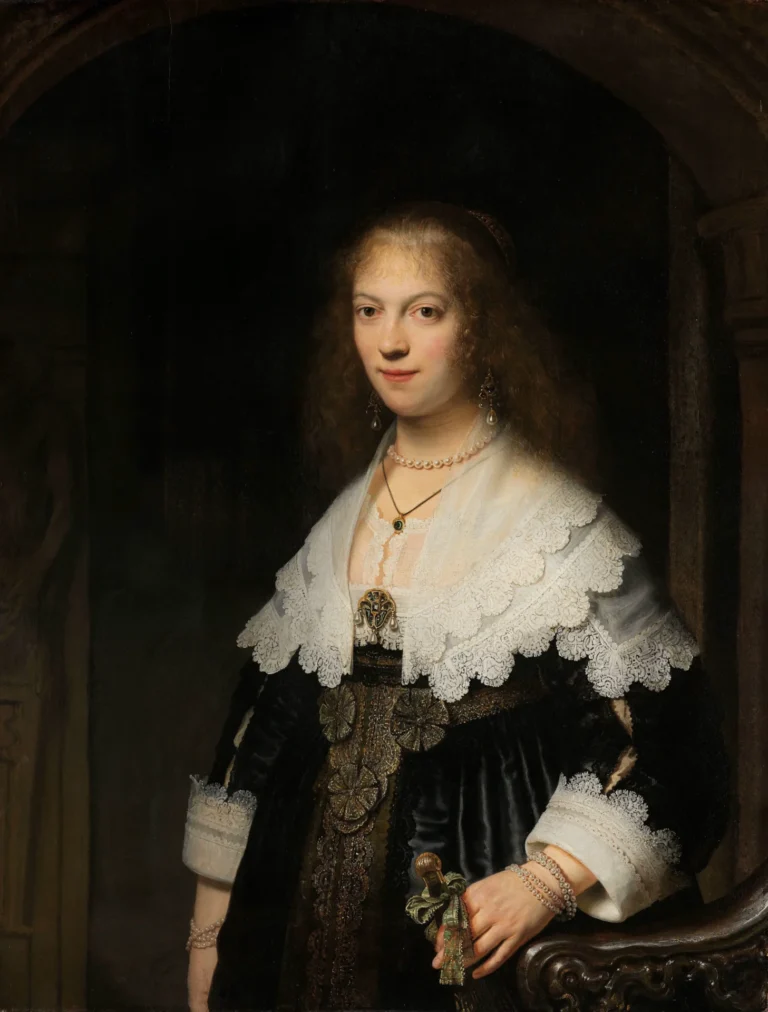Portrait of Maria Trip
This exquisite portrait features Maria Trip, daughter of a wealthy Amsterdam merchant, exemplifying the opulence of the Dutch Golden Age. Painted when she was just 20 years old, Maria is adorned in sumptuous clothing, highlighted by intricate lace and luxurious jewelry. The fan she elegantly holds serves as a dual symbol of both femininity and marital readiness. Currently housed in the Rijksmuseum, this artwork offers a glimpse into a pivotal moment in art and social history.
Year 1639
About the Artwork
'Portrait of a Woman, Possibly Maria Trip' illustrates the intersection of art, fashion, and social norms in the Netherlands during the 17th century. Commissioned by Elias Trip, Maria's father, the painting reflects both her family's status and the expectation for young women to prepare for marriage. The remarkable detail in her attire and accessories captures not only the material wealth of the Trip family, but also the intricacies of 17th-century Dutch culture. This portrait serves as a historical document, revealing the societal values concerning femininity, status, and marriage at that time. As a significant work by Rembrandt, it continues to be celebrated and interpreted in various ways, offering insights into both the artist's mastery and the character of his subjects.
Did You Know
Liked what you see? Add it to your collection.
Enjoyed reading? Share it.
... continued
Subject and Context
The subject of the painting is believed to be Maria Trip, the daughter of Elias Trip, a prominent and wealthy merchant in Amsterdam. At the time of the painting, Maria was 20 years old.
Artistic and Historical Significance
This portrait is a reflection of the Dutch Golden Age, a period when the Netherlands experienced significant economic and cultural growth. The painting showcases the wealth and status of the Trip family through the depiction of expensive garments and accessories.
Fashion and Attire
Maria Trip is depicted wearing a high-waisted, black satin gown with a low-necked bodice, a skirt ornamented with metallic lace, and sleeves that reveal her bracelets. The dress features elaborate lace cuffs and a triple lace collar. She also wears a brooch, pearls (including earrings, bracelets, and a necklace), and holds a fan with a ribbon laced with pure gold. These elements highlight her family's wealth and her readiness to enter the marriage market, as she married Balthasar Coymans two years after the painting was made.
Symbolism
The fan held by Maria Trip is symbolic, often indicating a reference to sexuality or love in Dutch portraiture of the time. This symbolism suggests that Maria was preparing to enter the marriage market.
Physical Details
The painting is executed in oil on panel, measuring 107 x 82 cm (42.1 x 32.2 in). It is currently housed at the Rijksmuseum in Amsterdam, on loan from the Familie Van Weede Stichting.
Artist
Rembrandt van Rijn, born in 1606 and died in 1669, was a renowned Dutch painter and a key figure in the Dutch Golden Age. This portrait exemplifies his skill in capturing the essence and status of his subjects through detailed and expressive depictions.










